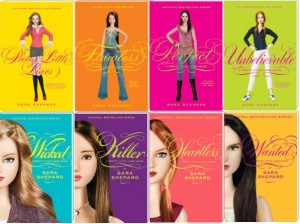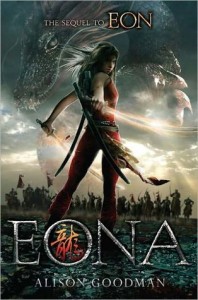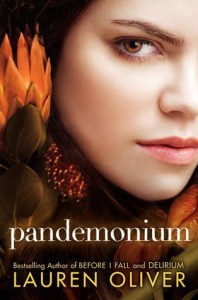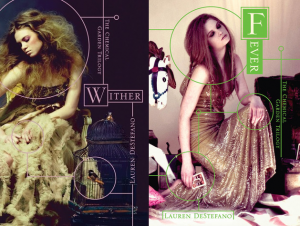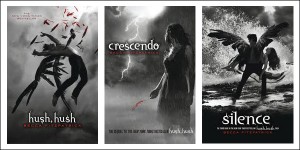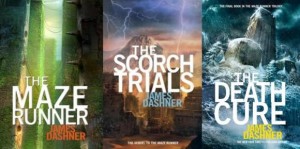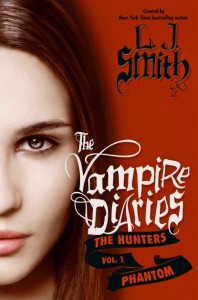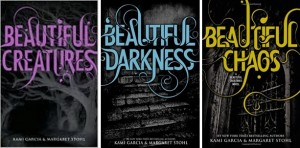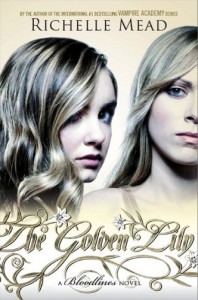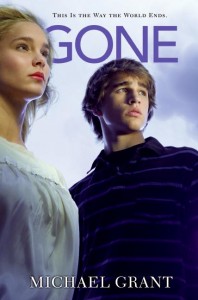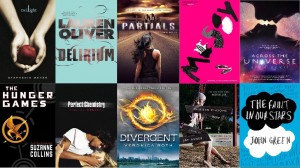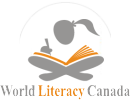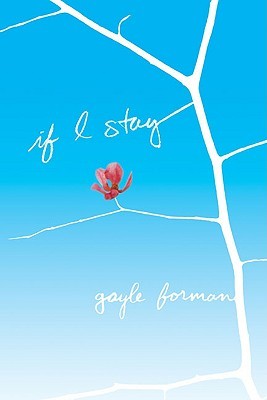
Ana's Rating
Readers Rating
On a day that started like any other…
Mia had everything: a loving family, a gorgeous, adoring boyfriend, and a bright future full of music and full of choices. Then, in an instant, almost all of that is taken from her. Caught between life and death, between a happy past and an unknowable future, Mia spends one critical day contemplating the only decision she has left–the most important decision she’ll ever make.
Simultaneously tragic and hopeful, this is a romantic, riveting, and ultimately uplifting story about memory, music, living, dying, loving.
There are two kinds of books about death: the sad ones, and the ones that stay with you. I say this only because you can’t write a proper book about death with showing how bittersweet it is; it’s more than sadness, it’s more than melodrama. It’s heartwarming memories and people getting together to remember a beautiful person. Or, in Mia’s case, it’s a question: should she stay?
Although the whole of If I Stay leads up to Mia’s answer, I never did predict it. All I can say on the subject is that my heart melted— especially after reading the first chapter of the sequel, enclosed in the last pages of my copy.
I am not a particularly musical person. Sure, I couldn’t live without my iPod, but other than that? Meh. Gayle Forman made me forget that. For a few days, I knew Jonathan Richman, love(d) Blondie, and breathed Yo-Yo Ma. It’s not often that I’m able to completely immerse myself into a world–this being a contemporary completely centered on music– but I appreciate it.
It’s not so much Mia, in all of her honesty and quietness, that I fell in love with, but her family. And when I say ‘family’, I don’t just mean her old school punk father and rocker chick mother, I mean all of If I Stay‘s supporting cast. The battleaxe nurses, besties with zero tolerance for BS and soulful boyfriends were just as much Mia’s family as anyone she lived with, as Kim so heartrendingly pointed out. My favourite character was actually Mia’s Gramps; he did not remind me of my own in anyway, but I loved him nonetheless.
Speaking of love, If I Stay is definitely not your typical YA romance. I’ll let Mia explain this to you:
It didn’t start out so smoothly with Adam and me. I think I had this notion that love conquers all. […] In books and movies, the stories always end when the two people finally have their romantic kiss. The happily-ever-after part is just assumed.
Adam and Mia’s relationship was not smooth in any way of the word, but it was realistic and refreshing. I needed that.
If I Stay is not a classic tear-jerker, but I did become choked up on more than one occasion. I recommend this book to you if you’re not afraid of crying in public places, if you would like to be musically enlightened, or if you feel the desperate need to be confronted with a reality check. 4.7/5 stars.
I’ll keep you posted,
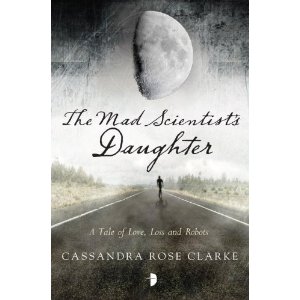
September 26th, 2012
Guest post by Cassandra Rose Clarke: Top 10 Bookish Settings
Hello, everyone! Ana asked me to write a guest blog on my favorite bookish settings. This request was a lot harder than it initially seemed! Fortunately, I was finally able to narrow it down to my top ten. Here they are, listed in no particular order:
1. The Weetzie Bat books, by Francesca Lia Block: I’m always going on about how much I love Francesca Lia Block’s writing, and these books were the first on my list. On the cover of the omnibus edition, The New York Times is quoted as saying that Block “writes about the real Los Angeles better than anybody since Raymond Chandler.” Having never been to Los Angeles, I don’t know if that’s true or not, but I will say that Block’s descriptions of the city have single-handedly made me want to move there. She’s created a place where punk rock, old Hollywood, street food, canyons, filmmakers, and fashionistas all twist together to form an urban magic as bright and ubiquitous as neon.
2. Howl’s Moving Castle, by Diana Wynne Jones: One of the delightful things Jones does in this book is use fairy tale tropes as the basis for the conventions of Sophie’s society. Sophie is the eldest of three, which means she’s destined to fail horribly when they set out to make their fortunes (as happens in fairy tales all the time, since it’s always the youngest who succeeds). Her sisters are really her stepsisters, which should make them mean-spirited and ugly, but of course they aren’t at all. I also love how Sophie refuses to follow convention, which means she stays at home rather than going out on an adventure. It’s a clever take on the fairy tale setting.
3. Snow Crash & Diamond Age, by Neal Stephenson: These are technically two separate books, but I can’t help reading them as one world set during different times. The world in question is an interesting extrapolation from the cyberpunk books of the 1980s: technology is still overwhelmingly everywhere, but it’s also glitzy and bright and not necessary bad in and of itself. Diamond Age also explores a semi-dystopic social structure that I found intriguing, in which humanity has splintered itself up into tribes rather than nation-states.
4. The Great Gatsby, by F. Scott Fitzgerald: To me, this book has always read like a fantasy. The wealthy social sphere into which Gatsby inserts himself is described as if it belongs to a dream — drinks float around at parties, Daisy drifts in on a cloud of a fabric the first time we see her. The setting itself reflects just how ephemeral Gatsby’s social position is, which I think is brilliant.
5. A Song of Ice and Fire, by George R. R. Martin: This is not a world I would want to live in, at all, but I find it incredibly compelling. One of the things I love about the worldbuilding in these books is that you can see which aspects of it Martin finds interesting and which ones he doesn’t. So there are place names like “the Riverlands,” but there are also paragraph-long descriptions of coats of arms. Plus the world is just so big, which makes it a wonderful fandomy place, since there are so many minor characters and minor places that can be explored in fan fiction and fan art.
6. The Harry Potter books, by J.K. Rowling: In a lot of ways, the Harry Potter world is the flipside of the Song and Ice Fire world. Both are enormous and compelling and serve fandom purposes extremely well, but the Harry Potter world isn’t an endless parade of darkness and misery. One of the things I love best about the setting in Harry Potter is how you can go through and fill in the gaps — what, exactly is Dark Magic? What are wizarding schools like outside of Great Britain? There’s so much to explore.
7. Swamplandia!, by Karen Russell: Swamplandia! is an adult book that takes place in the Florida Everglades and is told from the point of view of a precocious adolescent girl. Even though the book is a realistic novel, the swamp is described as this treacherous, magical place that made it feel separate from our world. At the same time, though, Russell captures the flora and fauna and all the sensory details of the swamp in a way that feels very authentic.
8. The Martian Chronicles, by Ray Bradbury: This book fulfills all my lovely retro-futuristic dreams. It’s science fiction that reads like fantasy or even, at times, like surrealism. One of the characters has a bee gun! That’s a gun that shoots out bees! I also love the rainstorm that turns a desert into a forest. Bradbury’s Mars is less an exploration of scientific possibility and more an amalgamation of the stories we have about Mars, space travel, and colonization.
9. Mockingbird & Perfect Circle, by Sean Stewart: Again, these are two stand-alone novels that share a closely-related setting. In this case, it’s a magical realist version of Houston, Texas (where I live). Stewart does a wonderful job of capturing Houston in all its sprawling, sweltering glory, and he weaves in magic that feels organic to the city. I only have one quibble: in Mockingbird, the characters live in a house with no air-conditioning! I’ve never seen an air-condition-less house in Houston in my entire life.
10. Harriet the Spy, by Louis Fitzgerald: I know Harriet the Spy isn’t a typical “setting” book, but the setting was one of the things that captured my attention when I first read the story as a kid. When it was written, the book took place in the present day — that is, 1960s New York. But to me, reading it in Texas in the ‘90s, it might as well have been Middle Earth. I loved the descriptions of townhouses and apartments and neighborhood grocery stores, all perfectly mundane things I’d never seen myself.
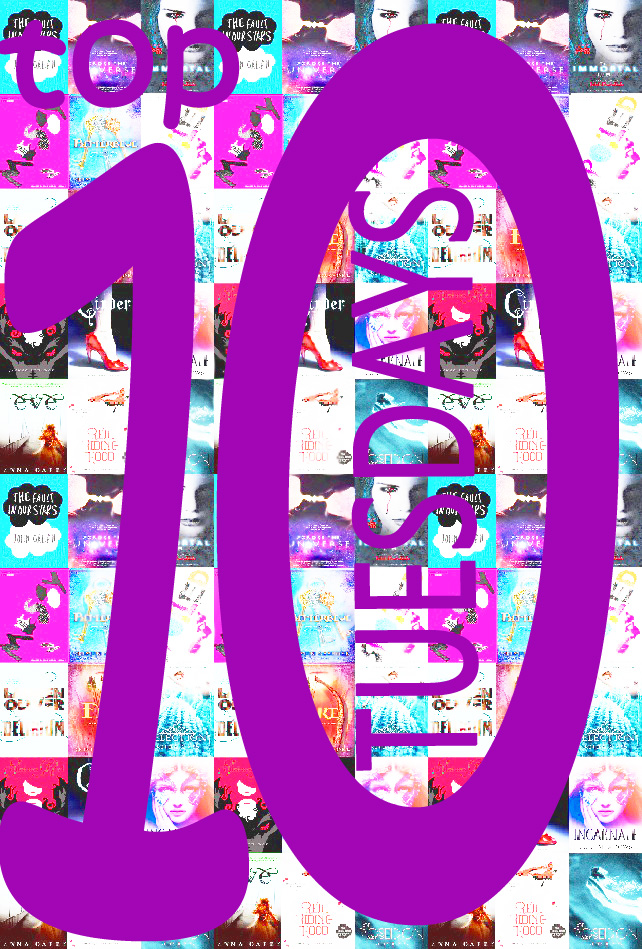
September 25th, 2012
Top 10 Series I Haven’t Finished
Gasp. I missed last week’s Top 10 Tuesday. How could I? To make up for it, tomorrow I’ll be posting Cassandra Rose Clarke’s Top 10 Favourite Bookish Settings, which I am super excited about.
(Almost) every week at around this time, I participate in The Broke and the Bookish‘s Top 1o Tuesday weekly meme. This week’s theme is Top 10 Books/Series I Haven’t Finished, and I’m counting down from number 10.
10. Pretty Little Liars series by Sara Shepard
I devoured the first book in this series… and then the show came out. Spoiler alert, much?
9. The Eon series by Allison Goodman
Despite its lack of romance, I loved Eon. And Eona is supposed to involve some snogging! So I don’t know what I’m waiting for. The right mood, maybe?
8. The Delirium series by Lauren Oliver
Pandemonium is currently gathering dust on the floor of my room, as it has been since last spring. It looks like a fall book, anyway, right?
7. The Chemical Garden series by Lauren DeStefano.
Again, the first book was amazing, and didn’t even give the second one a chance. I think that I need to go on a book-store shopping spree.
6. The Hush, Hush series by Becca Fitzpatrick
Like any other self-professed YA-lover, I can enjoy a good bad boy. But Patch? He missed my mark. Actually, he missed the general direction of my mark.
5. The Maze Runner series by James Dashner
I think that I have a prejudice against male protagonists, because I could not get through The Scorch Trials. I’m (probably wrongly) blaming Thomas’ lack of relatability.
4. Vampire Diaries by L.J. Smith
Honestly, this was my favourite series at one point. But ghost authors? Really? Harper Teen has sunk to new depths.
3. The Beautiful Darkness series by Kami Garcia and Margaret Stohl
After finishing Beautiful Creatures‘s last page, I flipped back to its first. And reread it . The whole thing. So, really, I have no excuse for not finishing the series. Except for maybe the ridiculous price of books?
2. Vampire Academy’s spin-off
I loved, loved, loved Vampire Academy, but Sidney, well… she’s just not my cup of tea. Perhaps she’s an acquired taste.
1. Gone by Michael Grant
Everyone I know went bat-crazy about this book when it first came out, so I don’t know why I never got into it. I’m lucky that I didn’t excommunicated from my social circle for calling a DidNotFinish.
I’ll keep you posted,

Hi everyone,
Long time, no talk! I have been buried in homework for the past few weeks, and haven’t picked up a book that isn’t a textbook for a lot longer. Clearly, I need to make some changes to my lifestyle.
In the meantime, do you remember 8: the Untold Story of the Previously Unknown 8th Dwarf? Well, Michael Mullin has launcher a Kickstarter Project wherein he attempts to collect money in order to print his books. He’s actually already obtained his $6, 000 goal, but I invite you to watch his video anyway. He makes himself incredibly clear on the subject of Tim Burton– it’s very amusing. Have fun watching!
I’ll keep you posted,
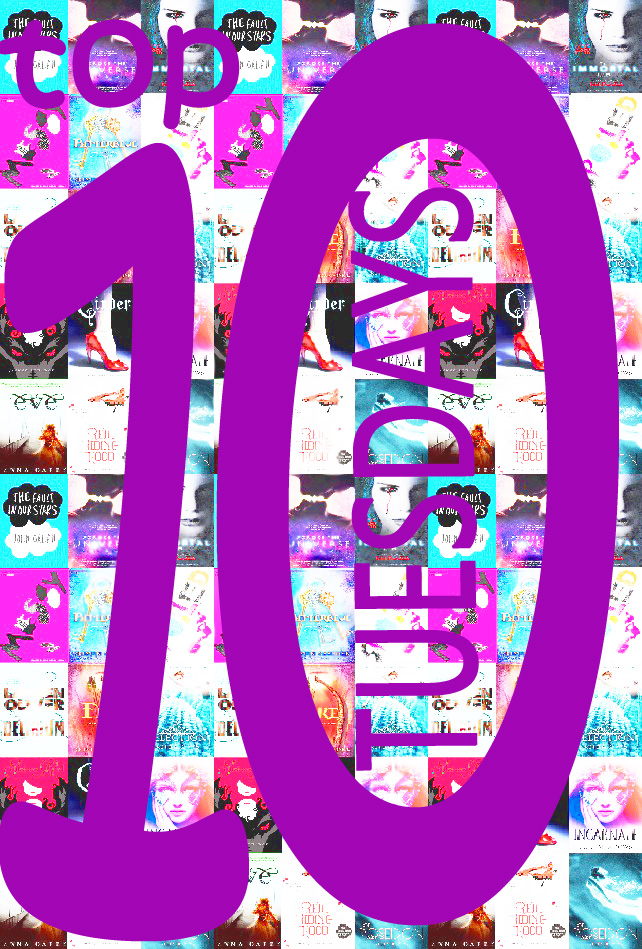
September 11th, 2012
Top 10 Books that Make You Think
Happy Tuesday! Every week at around this time, I participate in The Broke and the Bookish‘s Top 1o Tuesday weekly meme. This week’s theme is Top 10 Books that Make you Think, and I’m counting down from number 10.
9. Delirium by Lauren Oliver. This is a big one when it comes to philosophy and such.
8. Partials by Dan Wells. The following questions have come to mind after reading this book:
7. Messy by Heather Cocks and Jessica Morgan. Five words: what’s behind a mean girl’s facade?
6. Across the Universe by Beth Revis. This book is rich in all the ways not to manage a society. Oh, and on the consequences of inertia, too. It is a sci-fi, after all.
5. The Hunger Games by Suzanne Collins. Okay, this one is obvious. Panem, the infamous country made up all 12 of The Hunger Games‘s districts, is literally taken from a Latin phrase: “panem et circenses”. Meaning “[give them] bread and circuses”, this phrase was supposed to be the key to managing a society. Enough said.
4. Perfect Chemistry Simone Elkeles. This is the book for you if you hate the conformity of stereotypes and high school prejudices.
3. Divergent by Veronica Roth. Ah, another dystopian. Apparently these are big thinkers.
2. Thirteen Reasons Why by Jay Ahsher. I’m not going to lie: I sobbed like a baby when I read this book. I don’t want to discourage you from reading it– in fact, I strongly suggest that you do— but Thirteen Reasons Why is definitely a tear-fest. Be prepared.
1. The Fault in our Stars by John Green. I have not read many-a-book that analyze the meaning of life withing their pages, but this is one of them. And John Green did a doggone good job.
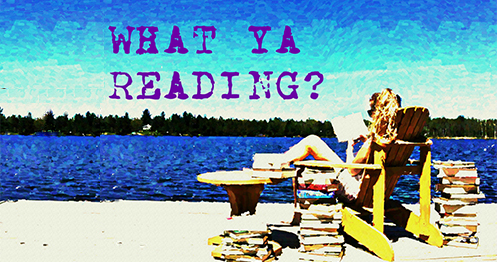

![[Twitter]](http://www.whatyareading.com/wp-content/plugins/bookmarkify/twitter.png)
